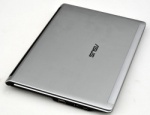 It used to be that you’d pay a significant price premium for a slim ultraportable laptop – machines that were smaller and lighter than typical 5-6lb laptops. In the days before netbooks, they were really your only option for getting a thin and light laptop. But now that netbooks have carved out a segment of cheap and portable computers in the $200-$500 range, the ultraportables needed to adapt as well.
It used to be that you’d pay a significant price premium for a slim ultraportable laptop – machines that were smaller and lighter than typical 5-6lb laptops. In the days before netbooks, they were really your only option for getting a thin and light laptop. But now that netbooks have carved out a segment of cheap and portable computers in the $200-$500 range, the ultraportables needed to adapt as well.
We’re now seeing more ultraportables filling a price and size segment between netbooks and more capable $1,000+ laptops. This new generation typically retails for $400-$900, features screen sizes of 12-13″, and offers a new generation of mobile processors like Intel’s ultra-low voltage (ULV) or AMD’s Neo X2 lines. These new processors offer much improved performance over the Intel Atom chip, a netbook staple. Instead of being stripped-down laptops, these new ultraportables more resemble super-charged netbooks. They offer a similar size and battery life as netbooks, but with far more power.
This shift was inevitable, after all something had to fill that vacuum between low-cost netbooks and full-sized laptops. For the past few years we’ve seen cheap and bulky full-sized laptops retail for $500-$800, but generally it’s been more worthwhile to spend a bit more and get a faster/sturdier machine. One general trend in consumer products right now is towards thinner and lighter devices, so most likely these new ultraportables will make those cheap and bulky full-sized laptops extinct.

More interesting to me right now is how these ultraportables may affect their older siblings, the netbooks. Are they a direct threat? Or can the two find a way to live together in an increasingly cutthroat low-cost laptop market? Here are my thoughts:
Ultraportables will force netbooks to be cheaper…
The most apparent change we’ll be seeing in the netbook market is lowered prices across the board. We’re already seeing prices drop on new netbook releases, and I don’t think we’ll be seeing many more retailing near $500. The low cost of ultraportables will be a downward pressure on netbook prices, and we’ll be seeing more aiming for $200 and below. Netbooks will gain a new breath of life once $100 becomes a more feasible price point.
…But ultraportable users probably won’t ever need to buy a netbook
Right now netbooks are best suited as secondary machines to your bulkier laptop or desktop computer. With ultraportables offering the best of both worlds, decent speeds and portability, people owning ultraportables will have little reason to invest in a netbook that’s only marginally smaller. Ultraportables are now powerful enough that many users could live with one as their only machine, which was something of an impossibility for netbooks thus far.
While great for web browsing and simple productivity tasks, netbooks lack the horsepower necessary to do more advanced work like picture, audio, and video editing. In my previous life working in higher education IT, I made sure we never recommended netbooks as a student’s only computer precisely for that reason. They’ll certainly get faster – just look at newer netbooks featuring nVidia’s Ion chipset which can play HD movies and some games – but ultraportables will always have a performance advantage, as well as the benefit of larger screens.
Many will look to ultraportables as secondary machines
This may be the worst news for netbooks. Thus far netbooks have been the obvious choice if you’re looking for a secondary computer, but now ultraportables are a tempting and more powerful option at only a few hundred dollars more. I own an Asus Eee 1005HA, a decently capable netbook, and I’m often finding myself cursing the machine when I try to run more than four programs at once. And this is after I upgraded it to 2GB of RAM. Right now I’m tempted to pick up an ultraportable myself, and I’m sure I’m not the only netbook user feeling this way.
Then again, if netbooks can reach the $200 price point with newer hardware like nVidia’s Ion, they will remain the more tempting option.
Ultraportables are currently the better investment
If you’re looking to get a new secondary laptop right now, or aiming to get one as a present for the holidays, then I recommend you go for an ultraportable. As I mentioned, netbooks will eventually drop in price and offer better hardware to compete, but as of this holiday season you’re going to get far more bang for your buck from an ultraportable.
An ultraportable will last you longer, and it will be a much more capable machine. The netbook’s future depends on how long this remains the case.
About the author:
Devindra Hardawar is a tech/film blogger and podcast host. You can find him writing at the Far Side of Tech and Slashfilm.



























